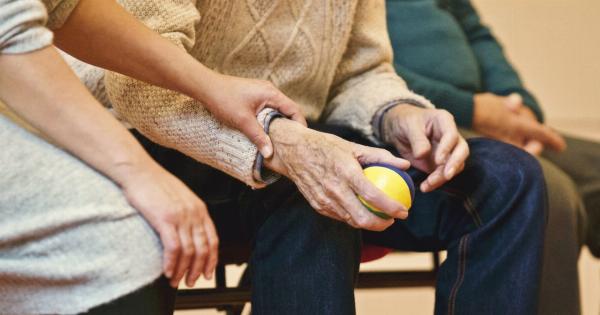Parkinson’s disease is a neurodegenerative disorder that primarily affects a person’s motor functions. However, it is important to note that Parkinson’s disease is not only limited to motor symptoms.
There are several non-motor symptoms of Parkinson’s disease that can have a significant impact on a person’s quality of life. Understanding these non-motor symptoms is crucial for both individuals living with Parkinson’s disease and their caregivers. In this article, we will delve into these non-motor symptoms and provide important information that you need to know.
The Range of Non-Motor Symptoms
Parkinson’s disease is most commonly associated with motor symptoms such as tremors, rigidity, and bradykinesia (slowness of movement). However, there is a wide range of non-motor symptoms that can occur as the disease progresses.
These non-motor symptoms can manifest in various ways and vary from person to person. Some common non-motor symptoms of Parkinson’s disease include:.
1. Cognitive Changes and Dementia
Many individuals with Parkinson’s disease experience cognitive changes over time. These changes can include difficulties with memory, executive functions, attention, and processing speed.
In some cases, these cognitive changes may progress to dementia.
2. Mood Disorders
Mood disorders such as depression and anxiety are common non-motor symptoms of Parkinson’s disease. These mood disorders can significantly impact a person’s overall well-being and quality of life.
3. Sleep Disorders
Individuals with Parkinson’s disease often experience sleep disorders such as insomnia, excessive daytime sleepiness, restless leg syndrome, and REM sleep behavior disorder.
These sleep disturbances can further exacerbate the other symptoms of the disease.
4. Autonomic Dysfunction
Autonomic dysfunction refers to the disruption of the automatic functions of the body controlled by the autonomic nervous system.
Symptoms can include orthostatic hypotension (low blood pressure upon standing), constipation, urinary dysfunction, and sexual dysfunction.
5. Fatigue
Many individuals with Parkinson’s disease experience fatigue, which is different from normal tiredness. Fatigue in Parkinson’s disease is often described as a deep exhaustion that is not relieved by rest.
6. Sensory Changes
Some individuals with Parkinson’s disease may experience sensory changes such as reduced sense of smell (hyposmia), vision problems, or difficulty distinguishing between colors.
7. Speech and Swallowing Difficulties
Parkinson’s disease can also affect the muscles involved in speech and swallowing. Speech may become softer, slurred, or monotonous, and swallowing difficulties, known as dysphagia, can also occur.
8. Pain
Pain is a commonly reported non-motor symptom in Parkinson’s disease. It can manifest as musculoskeletal pain, dystonia-related pain, or central pain syndromes.
9. Psychosis and Hallucinations
In advanced stages of Parkinson’s disease, some individuals may experience psychosis, characterized by hallucinations and delusions. These symptoms can be distressing for both the individual and their caregivers.
10. Impulse Control Disorders
Some individuals with Parkinson’s disease may develop impulse control disorders such as compulsive gambling, excessive shopping, or binge eating.
These behavioral changes are often associated with dopamine agonist medications used to treat Parkinson’s disease.
It is important to note that the occurrence and severity of these non-motor symptoms may vary from person to person. Additionally, non-motor symptoms may precede motor symptoms in some cases.
Managing Non-Motor Symptoms
As there is currently no cure for Parkinson’s disease, managing non-motor symptoms is an integral part of treatment.
It is crucial for individuals with Parkinson’s disease to work closely with their healthcare team to address and manage these symptoms effectively.
Treatment approaches for non-motor symptoms may include medications, physical therapy, occupational therapy, speech therapy, psychological support, and lifestyle modifications.
Each individual’s treatment plan will be tailored to their specific needs and symptoms.
Conclusion
While Parkinson’s disease is primarily characterized by motor symptoms, non-motor symptoms can also significantly impact a person’s daily life.
Understanding and addressing these non-motor symptoms are crucial for optimal management of the disease. If you or a loved one has Parkinson’s disease, it is important to consult with healthcare professionals who specialize in the treatment of the condition to develop an appropriate treatment plan.




























